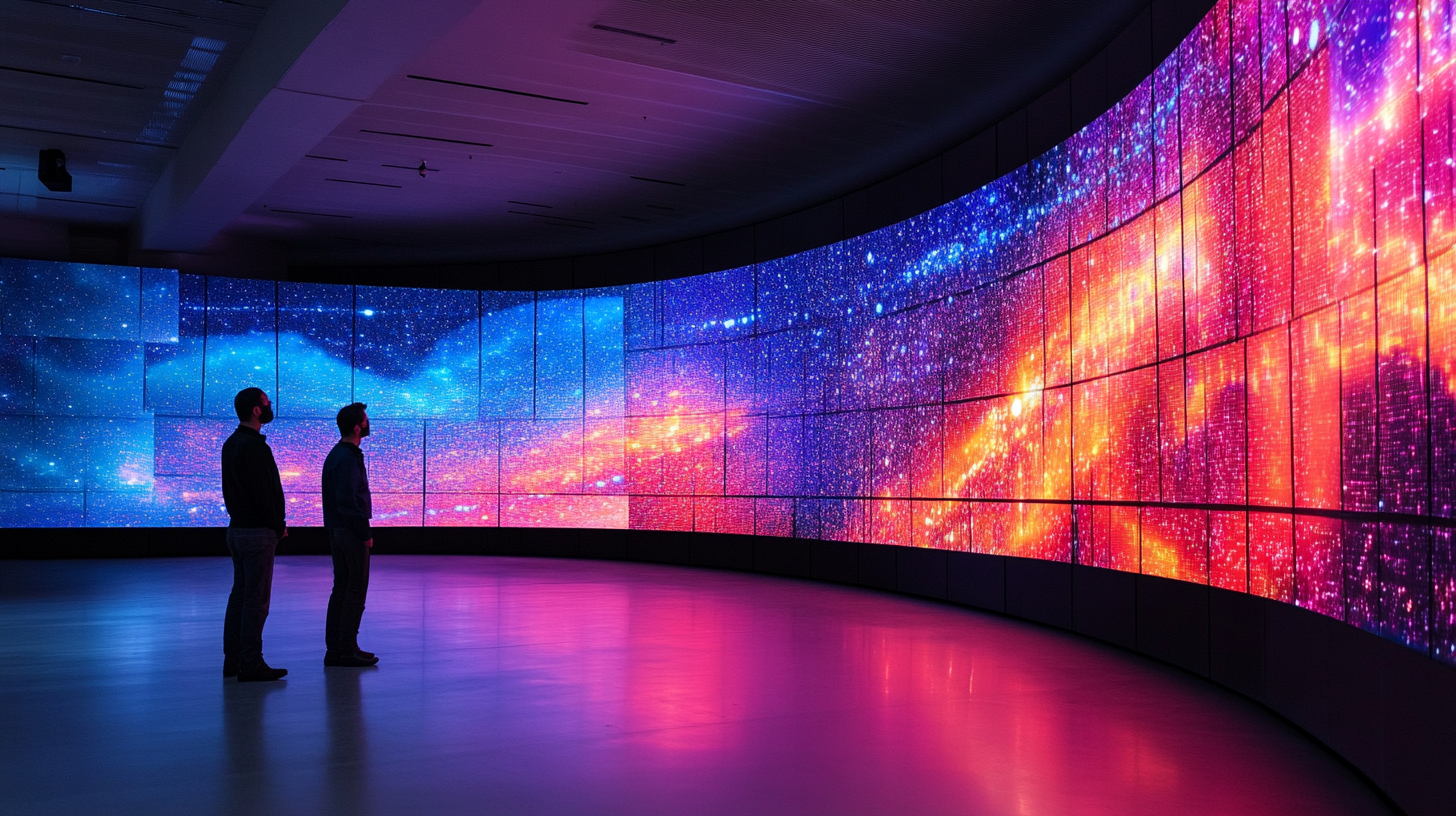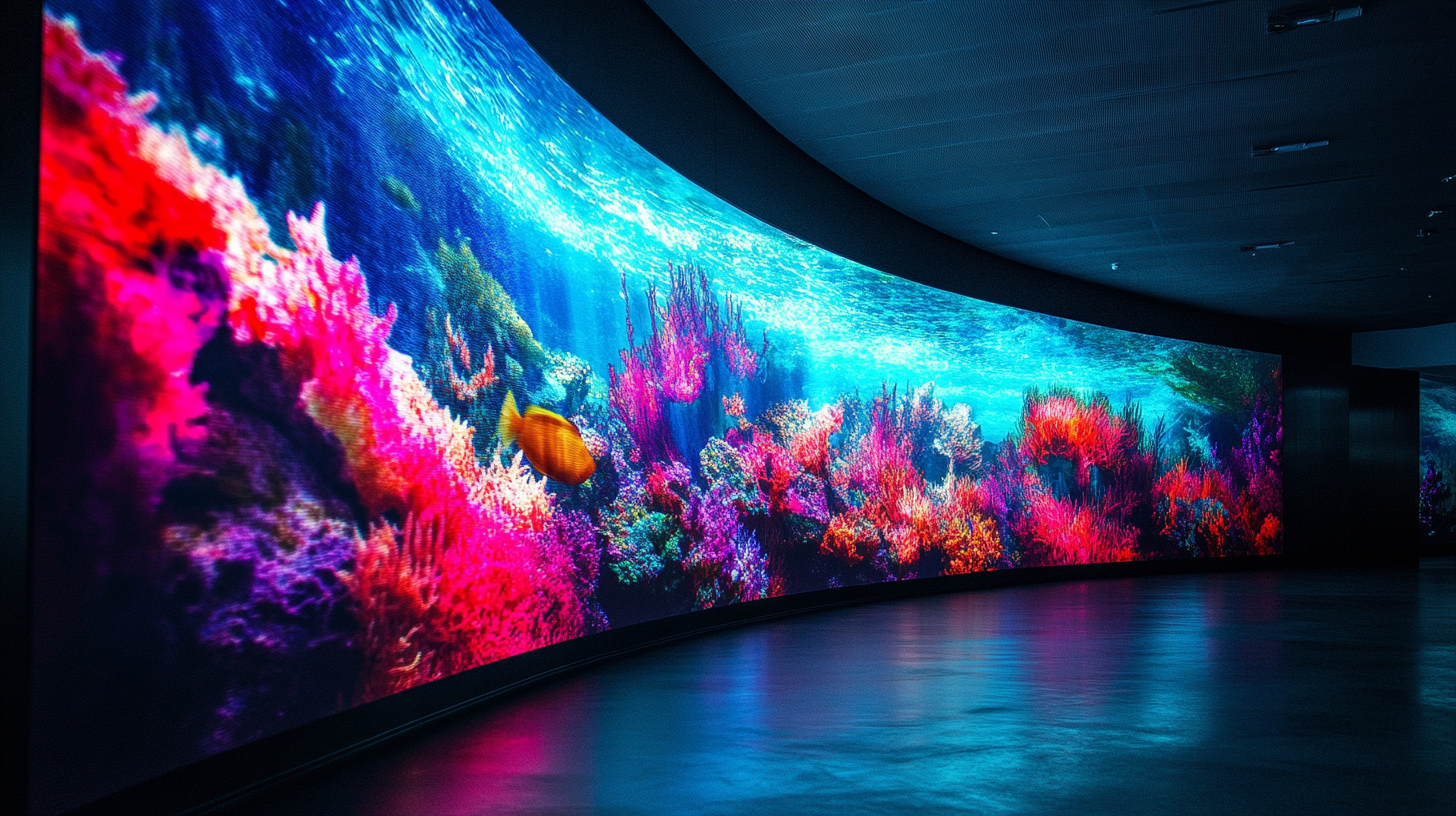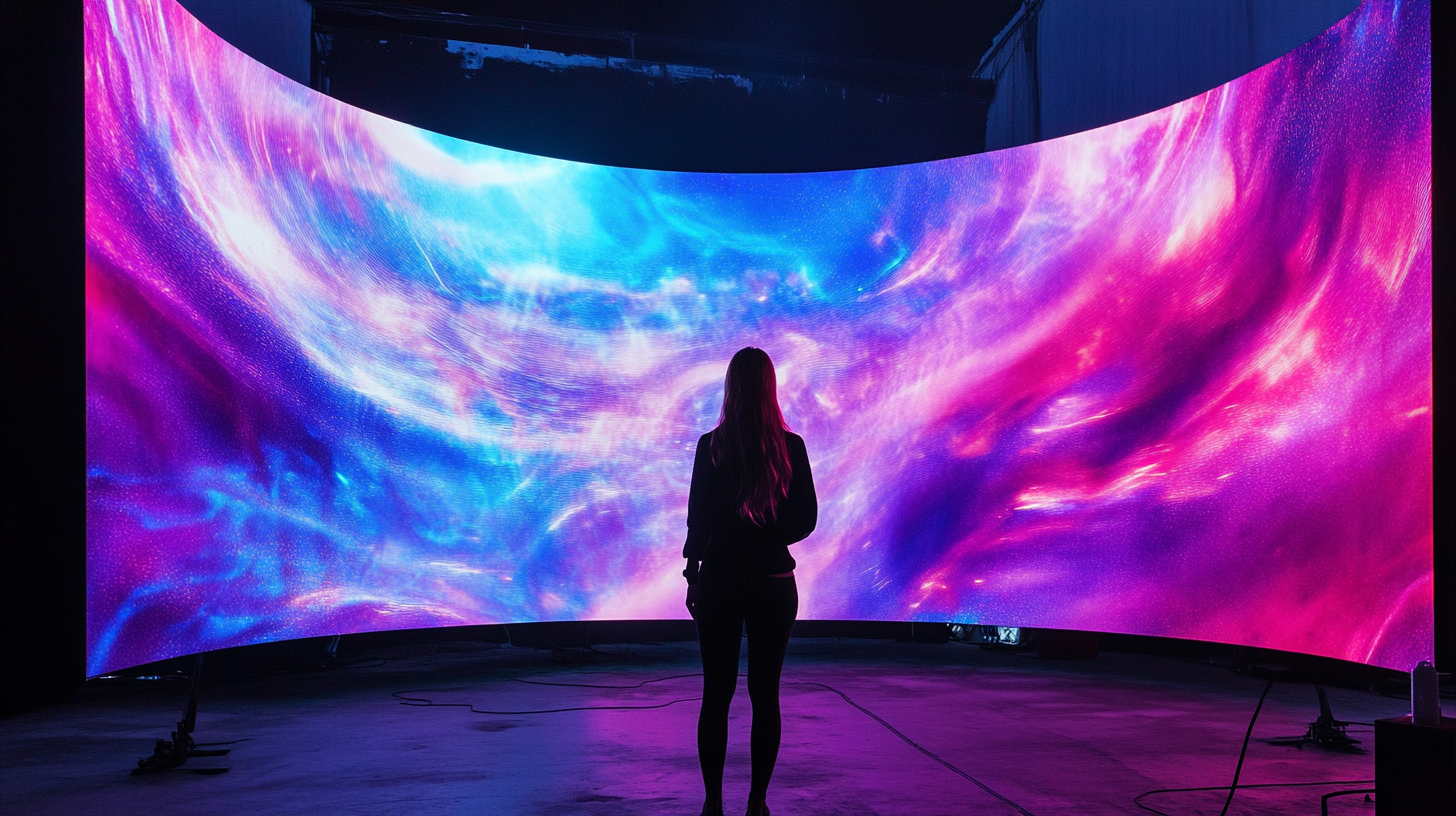
-
Home
-
Products
-
About Us
-
Case
-
News
-
BLOG
-
FAQ
-
Contact Us
Leave Your Message

As the demand for innovative display technologies continues to surge, the Flexible LED Film Screen is poised to revolutionize the visual experience in various sectors, from advertising to architecture. According to a report by MarketsandMarkets, the global market for LED displays is projected to reach USD 70.7 billion by 2026, growing at a CAGR of 15.2%. This growth is largely driven by advancements in flexible LED technology, which offers significant benefits such as lightweight design, high durability, and the ability to conform to various shapes and surfaces. The flexibility and adaptability of these screens open up new avenues for creative expression in visual communications.
In 2024, sourcing the next-generation Flexible LED Film Screen will become increasingly critical for businesses looking to stay competitive in a rapidly evolving market. Industry experts predict that the integration of artificial intelligence and enhanced manufacturing processes will further boost the capabilities of these displays, making them more appealing to end-users. Understanding the essential insights into the sourcing landscape can help companies navigate challenges and capitalize on opportunities in this burgeoning segment. As brands increasingly prioritize unique and dynamic visuals, the Flexible LED Film Screen stands at the forefront of this transformation, shaping the future of digital engagement.

The realm of flexible LED film technology is on the cusp of a revolutionary transformation in 2024, driven by several key trends that are set to redefine how we perceive and utilize visual displays. According to a recent report by Allied Market Research, the global flexible LED display market is anticipated to reach $68 billion by 2028, growing at a CAGR of over 16% from 2021 to 2028. This surge is fueled by the increasing demand for lightweight and versatile display solutions across various sectors, including advertising, automotive, and consumer electronics. One of the most significant trends anticipated for 2024 is the integration of advanced manufacturing techniques such as roll-to-roll printing, which enhances production efficiency while reducing costs. This method not only accelerates the supply chain but also opens avenues for customization, allowing designers to create tailor-made solutions that cater to specific customer needs. Furthermore, innovations in materials science are paving the way for more durable, weather-resistant films, showcasing improved performance metrics in terms of brightness and energy efficiency. Sustainability also plays a critical role in shaping the future of flexible LED film technology. Market research by MarketsandMarkets indicates that eco-friendly manufacturing processes and recyclable materials are becoming crucial considerations for consumers and manufacturers alike. As sustainability becomes a focal point, the development of biodegradable LED films and energy-efficient display technologies is expected to gain momentum, meeting the growing consumer demand for environmentally responsible products. These trends not only highlight the potential for innovative applications but also mark a significant shift towards a greener future in the display technology industry.

When sourcing the next-generation flexible LED film screens in 2024, it’s critical to evaluate the quality based on several key factors. As the industry transitions towards advanced display technologies, understanding the distinctions between Mini-LED, Micro-LED, and OLED is essential. According to a recent report by Market Research Future, the global flexible display market is expected to grow at a compound annual growth rate (CAGR) of 21.5%, reaching approximately $41 billion by 2026. This surge illustrates the increasing demand for displays that not only offer flexibility but also superior image quality and performance.
The first essential insight revolves around the technological capability of the screen. Mini-LED and Micro-LED technologies deliver improved brightness and contrast compared to traditional OLED displays. While Mini-LED enhances backlight control, Micro-LED offers self-emissive properties, enabling higher pixel density and lower power consumption. A study by IHS Markit predicts that Micro-LED will dominate the market by 2025, accounting for nearly 30% of all display shipments due to its superior longevity and energy efficiency.
Another key factor in evaluating quality is the manufacturing process. Precision in the production techniques used for flexible LED films has a significant impact on the overall performance and durability of the screens. A report from Gartner highlights that companies focusing on R&D and innovative manufacturing processes are more likely to meet the evolving consumer needs. As such, sourcing partners should emphasize manufacturers with advanced capabilities in defect reduction and yield improvement to ensure high-quality end products.

In 2024, the market for flexible LED film screens is expected to expand significantly, driven by consumer demands that prioritize versatility and adaptability. One of the key insights is the increasing desire for lightweight and portable designs. Consumers are looking for screens that can be easily transported and set up in various environments, whether for personal use, events, or commercial applications. This shift towards mobility encourages manufacturers to focus on developing thinner and more flexible materials that maintain high-quality display standards while being easy to handle.
Another critical aspect of consumer demand centers around customization. Users want the ability to tailor their screens to fit unique specifications, such as size, resolution, and even color profiles. As flexible LED technology progresses, manufacturers must innovate to provide options for modular installations, allowing consumers to create seamless displays that cater to their specific aesthetic and functional needs. This level of personalization not only enhances user experience but also creates opportunities for businesses to stand out in a competitive landscape.
Furthermore, energy efficiency is becoming a vital consideration for consumers when choosing flexible LED screens. With a growing awareness of sustainability and environmental impact, users are seeking products that minimize energy consumption without sacrificing performance. Manufacturers responding to this demand may focus on integrating advanced technologies that bolster energy efficiency while ensuring vibrant visuals, thus appealing to eco-conscious consumers in 2024 and beyond.

As we look toward 2024, the innovative applications of flexible LED film technology are expanding far beyond traditional display purposes. The recent unveiling of advanced innovations such as Samsung's Vision AI at CES 2025 highlights not only the growth of intelligent displays but also the potential for flexibility in design and function. This evolution positions flexible LED films at the forefront of modern display solutions, allowing manufacturers to integrate adaptive technology into a variety of environments, from smart homes to urban installations.
Moreover, progress in materials science is driving the development of flexible perovskite light-emitting diodes (PeLEDs), which are set to revolutionize the display industry. These flexible micro-LED displays, which boast high mechanical robustness and vibrant color performance, can be integrated into dynamic communication systems, such as multi-channel visible light communication. As companies in China and across the globe continue to innovate, we can expect flexible LED technology to permeate new markets, creating possibilities in interactive advertising, wearable tech, and even automotive displays.
This trend toward flexibility not only enhances the versatility of displays but also pushes the boundaries of creativity and functionality. With increasing demand for high-resolution, lightweight, and transparent screens, the future of flexible LED film applications promises exciting advancements that will redefine how we interact with technology in our daily lives.
Sustainability has become a central theme in the sourcing of flexible LED film solutions, especially as the industry prepares for advancements in 2024. According to a recent report from the International Solid Waste Association, around 60% of electronic waste is attributed to LED products. This statistic underlines the necessity for manufacturers and buyers to prioritize sustainability not only in production processes but also throughout the product lifecycle.
When sourcing next-gen flexible LED film screens, companies should consider materials that are recyclable or made from sustainable sources. A 2022 study by the Global LED Alliance found that using eco-friendly materials in LED production could reduce the carbon footprint by up to 35%. Additionally, companies are increasingly adopting Life Cycle Assessments (LCAs) to evaluate the environmental impact of their sourcing decisions. These assessments help identify stages where sustainability initiatives can be implemented, ensuring that the screens are not only high-performing but also environmentally responsible.
Moreover, energy efficiency plays a crucial role in the sustainability discussion. As per the Energy Star program, LED technologies can reduce energy consumption by 75% compared to traditional lighting. The next-generation flexible LED film screens aim not only to enhance visual quality but also to minimize energy use, thus providing clients with long-term savings and supporting wider sustainability goals. As the market evolves, it is imperative that stakeholders align their sourcing strategies with these sustainable practices to meet regulatory expectations and public demand for greener solutions.